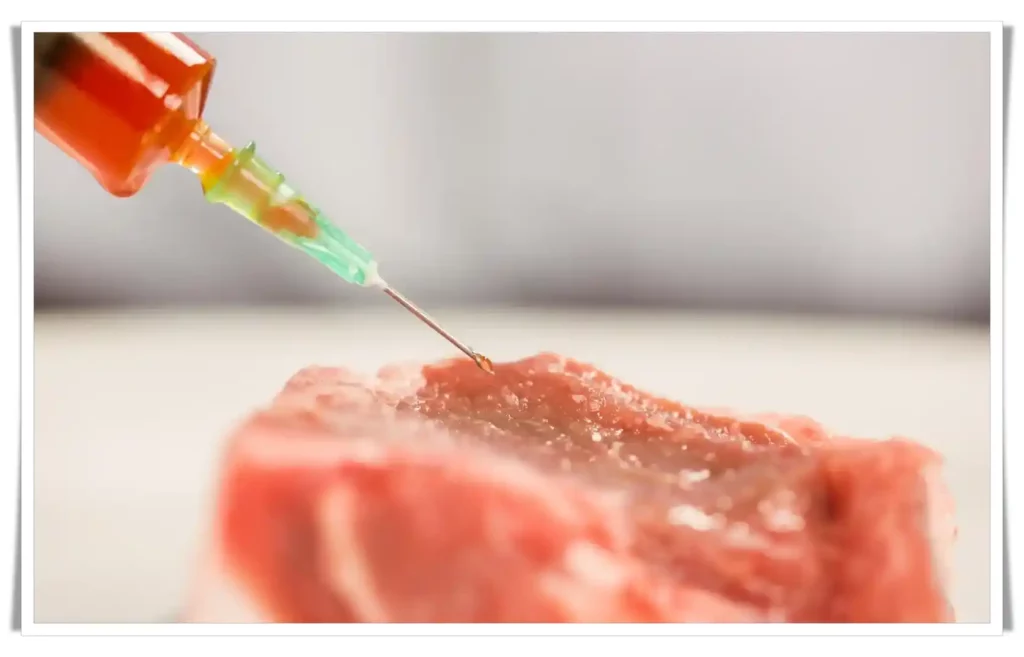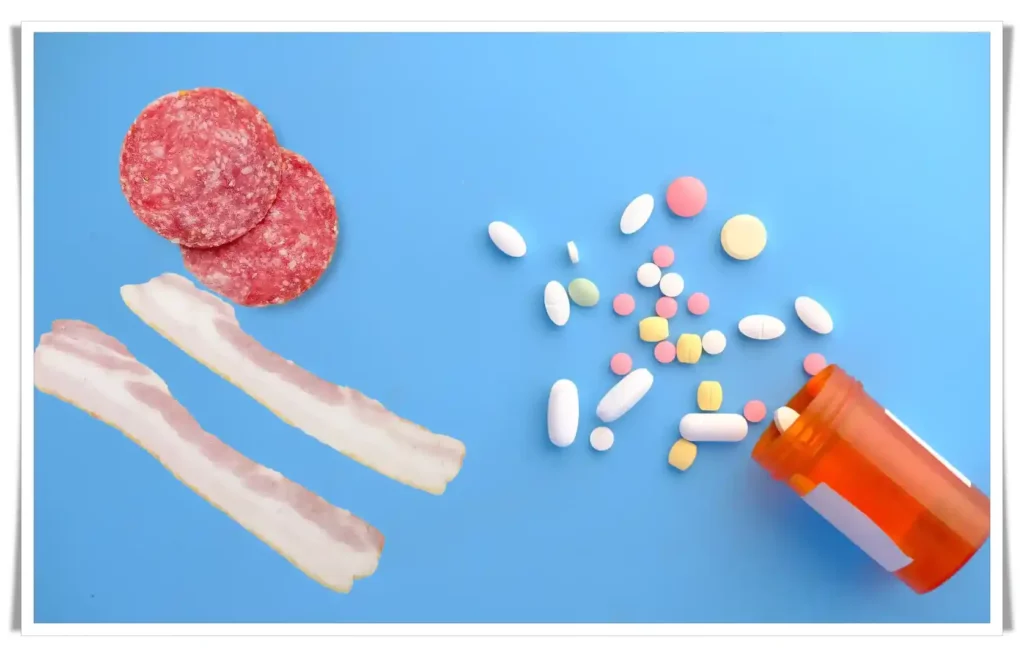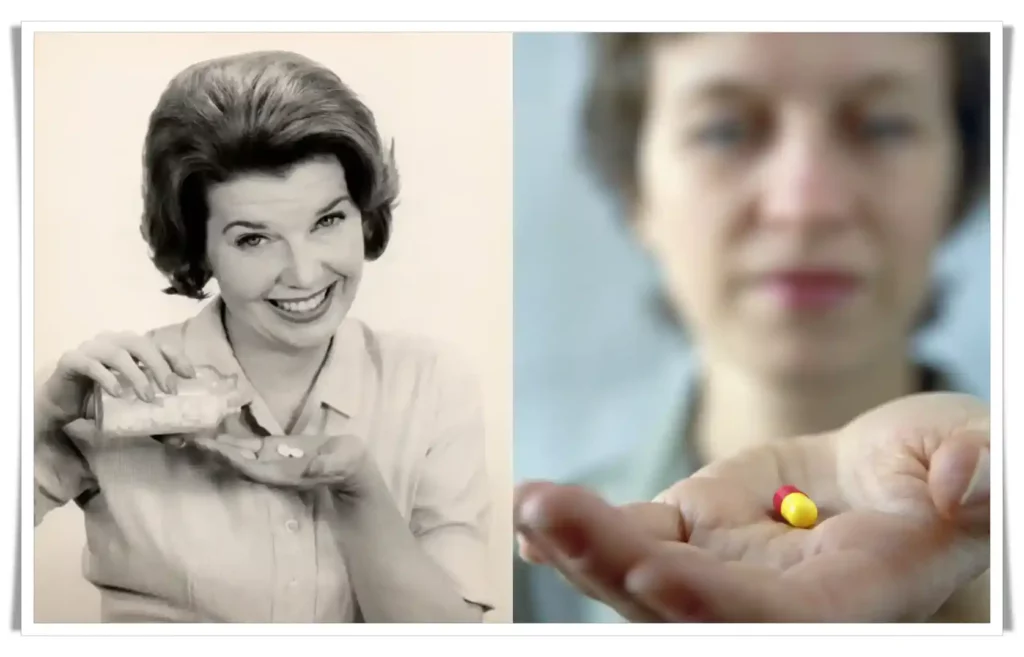Introduction- The Brotherhood Between the Food Industry and Pharma Industry
The title, "The Brotherhood Between the Food Industry and Pharma Industry - The Best Marketing Ever!" was inspired by my recent deep dive into Chris van Tulleken's compelling read, "Ultra-processed People." If you're searching for an enlightening read, I wholeheartedly recommend it.
Empower Your Health Journey – Explore My Free Apps for a Vibrant, Healthier Lifestyle Today!
This book sheds light on the intricate web of connections between the food industry and our purchasing habits, ultimately emphasizing the undeniable power of top-tier marketing. It validated a perspective I've held for a while: that masterful marketing strategies in the food industry can so subtly influence our choices, leading us to opt for foods that, beneath the surface, have detrimental effects on the health of both adults and children.
We live in a world where the food industry and pharma industry seem to feed off each other. The masterful art of the best marketing strategies has had profound effects on our daily choices, leading to a complex network of decisions, health implications, and consumer trends.
This intricate dance of influence is not exclusive to the food industry. The pharma industry, too, plays its part. Armed with strategic marketing, it has the potential to evoke anxiety and manipulate us into buying products that might provide temporary relief but fail to address the foundational issues.

Here's the picture: you're engrossed in a commercial showcasing a tantalizing dish, brimming with colours, and inviting textures. But what isn't readily shown is the hidden reality: many of these ultra-processed foods are laden with additives, severely lacking in fibre, and overflowing with artificial flavours. Continual consumption of such foods can wreak havoc on our organs – from the stomach and liver to the kidneys and intestines. And just when we're grappling with the health repercussions, the pharma industry swoops in, touting medications that promise to alleviate these very symptoms.
Yet, they rarely delve into the root causes or provide a comprehensive understanding of where these health issues originated.
This dynamic interplay between the food industry and the pharma industry, guided by the best marketing strategies, is a captivating topic worth exploring further. So, let's delve deeper and uncover the myriad facets of this intriguing relationship!
Ultra-Processed Foods Defined and Their Impact
Inspired by Chris van Tulleken's enlightening book, "Ultra-Processed People," let us delve deeper into understanding ultra-processed foods (UPFs) and their growing prominence in modern diets. At a fundamental level, UPFs are industrially produced and tend to be laden with added components such as sugar, salt, fats, and a myriad of artificial flavours. This composition results in them being a significant source of empty calories - meaning they provide a high energy content but are considerably lacking in essential nutrients.
The fallout of a diet dominated by UPFs is discernible. There's mounting evidence that suggests a direct correlation between consistent UPF consumption and a surge in health conditions. Notable among these conditions are obesity, heart disease, stroke, and type 2 diabetes. Such health implications are distressingly becoming more commonplace, leading to a more significant burden on healthcare systems worldwide.

Yet, what makes these foods so prevalent? Enter the power of the best marketing strategies. With compelling advertisements and packaging, consumers are often drawn to these products, misled by their convenience and taste appeal. Ironically, as health deteriorates from the very consumption of these products, the pharmaceutical industry steps in. Their role? Providing a range of medications and treatments that primarily address the symptoms manifested from UPF consumption, without necessarily targeting the root causes. This creates a cycle where the food industry and the pharma industry unwittingly or otherwise support each other, further entrenching UPFs in our daily lives.
Key Takeaways:
- UPFs are characterized by their high-caloric and low-nutrient content, made possible due to their industrial production and the addition of artificial ingredients.
- The health risks tied to regular UPF consumption are severe, ranging from metabolic diseases to cardiovascular issues.
- The best marketing strategies significantly amplify the allure of UPFs, often overshadowing the associated health risks.
- The pharma industry's solutions predominantly focus on symptom relief, inadvertently perpetuating the cycle by not addressing the primary cause - dietary habits.
- Implementing stringent regulations on UPF marketing can not only be a cost-effective approach but also instrumental in steering consumers towards healthier dietary choices.
A Dive into Pharma Marketing Evolution
Once upon a time, pharmaceutical marketing followed a simple blueprint. Sales representatives would directly engage with healthcare professionals (HCPs), pitching the benefits and uses of their company's products. There were clear channels of communication and the industry knew where its audience was. Fast forward to today, and the landscape is almost unrecognizable.
The dawn of the digital era has brought with it significant challenges and opportunities. With a vast amount of information just a click away, the dynamics have shifted. The modern HCP is inundated with information, leading to decreased availability for traditional sales meetings. As a result, the pharma industry finds itself pouring billions into marketing efforts to engage HCPs, often with a diminishing return on investment.
But the change doesn't stop there. Today's patients and caregivers are far more proactive. Armed with the power of the internet, they no longer rely solely on HCPs for medical insights. Online forums, health websites, patient testimonials, and digital communities have emerged as pivotal resources. This self-driven approach to medical information has created an informed patient base that seeks to understand their conditions, treatment options, and the medications they consume.

For the pharmaceutical industry, this transformation calls for a reevaluation of traditional marketing methods. The best marketing strategies now need to be more holistic, encompassing not only HCPs but also directly targeting the end consumers - the patients. Digital platforms, social media campaigns, educational webinars, and interactive apps are becoming integral tools in pharma marketing arsenals.
To navigate this intricate digital terrain, the industry must embrace adaptability. Tailoring content to different audiences, staying updated with evolving digital trends, and ensuring the delivery of accurate and actionable information will be crucial. After all, in this digital age, the best marketing is not just about reach but about meaningful engagement and fostering trust.
The Significance of Regulatory Measures
In recent years, there's been a growing alarm over the pervasive influence of ultra-processed foods (UPFs) on global health. Organizations at the forefront of global health advocacy, such as the World Health Organization (WHO) and the Pan American Health Organization (PAHO), have consistently underlined the detrimental effects of UPFs. With diseases like obesity, heart ailments, and other non-communicable diseases (NCDs) on the rise, the focus has shifted towards one of the potential culprits – the aggressive marketing of UPFs.
Why Regulations Matter
The power of advertising is undeniable. When harnessed by the food industry, especially in the domain of UPFs, it can significantly shape consumer behaviours, often with dire health consequences. Children, in particular, are susceptible. Their exposure to appealing advertisements can cultivate lifelong dietary habits, predisposing them to a host of health issues.
Recognizing this, both WHO and PAHO have been ardent proponents of stringent marketing regulations. By curbing the unfettered promotion of UPFs, these organizations aim to achieve several key objectives:
- Protect Vulnerable Populations: Children, due to their impressionability, are a prime target for UPF advertisements. Regulatory measures can shield them from misleading promotions, ensuring they grow with a balanced understanding of nutrition.
- Educate and Inform: With restrictions in place, there's a greater onus on companies to provide transparent information about their products. This can empower consumers to make informed dietary choices.
- Promote Healthier Alternatives: By limiting the marketing allure of UPFs, there's an indirect promotion of healthier, natural food alternatives, thereby fostering a culture of health and well-being.
The Bigger Picture
But it's not just about reducing the marketing reach of UPFs. These regulatory measures also emphasize the importance of societal awareness. By understanding the risks associated with UPFs and the tactics employed by certain segments of the food industry, consumers can actively seek better dietary alternatives.
Furthermore, such regulations also pave the way for governments and other institutions to invest in public health campaigns, further reinforcing the message of healthy eating and the dangers of UPFs.
Understanding Market Changes Over Time
The trajectory of market changes, especially in the food and pharmaceutical sectors, provides a fascinating glimpse into the interplay between industry advancements and consumer behaviour. At the heart of this evolution has been the ever-persistent engine of 'the best marketing'. Let's delve deeper into this journey to understand the nuanced shifts over the decades.
The Rise of the Food Industry
At the dawn of the 20th century, the food industry began witnessing significant transformations. The introduction of mass production techniques, refrigeration, and improved transportation systems led to the birth of packaged foods. These conveniences were a welcome change for households, and the market responded positively. The best marketing at that time hinged on highlighting these conveniences and the 'modern' way of living they endorsed.

Ultra-processed foods (UPFs) emerged as the stars of this era. These products, rich in additives and often lacking in nutritional value, dominated the shelves. Their longevity, taste appeal, and the ease they brought to fast-paced lives made them instant hits. And, of course, the best marketing played its role by glamorizing these attributes, often overlooking the health implications.
The Digital Wave and the Pharma Industry
Parallelly, the pharmaceutical industry, once reliant on direct interactions with healthcare professionals, began grappling with the digital revolution. The best marketing practices of the past started seeming antiquated as the internet emerged as the primary source of information. Doctors weren't the sole gatekeepers of medical knowledge anymore. Patients, empowered by digital platforms, began playing an active role in understanding their health conditions and treatment options.
This democratization of information posed challenges. On one hand, it gave consumers more autonomy, but on the other, it meant that pharmaceutical companies had to rethink their marketing strategies. The best marketing now required a digital facelift – websites, social media campaigns, and online forums became critical touchpoints.
Adapting to the New Age
Both the food and pharma industries, though operating in distinct domains, found a common challenge: adapting to changing consumer behaviors. While UPFs still dominate many markets, there's a rising consciousness about their health impacts. The pharma industry, meanwhile, is navigating the balance between traditional marketing and the demands of the digital age.
What's evident is that 'the best marketing' isn't a static concept. It morphs and evolves with time, reflecting the broader socio-economic and technological shifts of the era. For businesses, understanding these shifts isn't just about staying relevant, but also about anticipating future changes and being prepared to adapt. In a world driven by rapid changes, the ability to evolve one's marketing strategies remains the most potent tool for sustained success.
The Health Risks of Ultra-Processed Foods: What the Latest Research Reveals
Recent studies have only deepened concerns surrounding the health implications of ultra-processed foods (UPFs). One such pivotal research is highlighted in an article titled "New evidence links ultra-processed foods with a range of health risks" published by the British Medical Journal (BMJ). The findings are both enlightening and alarming.
Key Takeaways from the BMJ Article
- Broad Health Risks: The article underscores the multifaceted health risks associated with UPFs. Apart from the commonly cited concerns like obesity and heart disease, the research also highlights risks like cancer, stroke, and type 2 diabetes.
- Nutritional Void: One of the prime issues with UPFs is that they offer a calorie-rich but nutrient-poor dietary intake. The manufacturing processes strip these foods of essential nutrients, making them detrimental for long-term consumption.
- Call for Regulatory Measures: The BMJ article resonates with the concerns raised by global health organizations like WHO and PAHO, emphasizing the urgent need for marketing regulations to curb the consumption of UPFs.
To get a comprehensive view of these findings, we recommend reading the article directly on the BMJ's official site: New evidence links ultra-processed foods with a range of health risks.
Implications for the Consumer
The revelations from the BMJ article are not just academic concerns; they have real-world implications for everyday consumers. It becomes essential for individuals to make informed dietary choices. The seductive allure of UPFs, bolstered by the best marketing strategies, can often overshadow their health risks. But as this article and several other researches indicate, the long-term implications of consuming these products can be dire.
For those who prioritize their health and well-being, such findings are a clarion call. It prompts a return to natural, unprocessed, or minimally processed foods, which not only provide nutritional benefits but also reduce exposure to the myriad risks associated with UPFs.
The Role of Digitalization in Pharma Marketing
In the modern epoch, the very foundation of how industries communicate, market, and engage with their audiences has undergone significant shifts. This transformative wave, often attributed to rapid digitalization, has not spared the traditional domains of food and pharma. In this interconnected digital ecosystem, where consumers have a world of information at their fingertips, the strategies and nuances of pharma marketing have evolved to cater to an enlightened audience.
A New Age of Information
Gone are the days when healthcare professionals (HCPs) were the sole gatekeepers of medical knowledge. The advent of the internet has democratized information. Patients, caregivers, and the general public now have the ability to conduct their own research, access studies, read patient testimonials, and even participate in health forums. They are no longer passive recipients but proactive seekers of knowledge.
Challenges and Opportunities for Pharma
The traditional face-to-face sales pitches and product promotions to HCPs, which once dominated the pharma industry, have had to adapt. The challenge now is the oversaturation of digital content. With billions spent annually on digital advertisements, standing out in a crowded space is not easy.

However, digitalization also presents immense opportunities for the pharma industry:
- Targeted Marketing: Leveraging analytics and data, pharma companies can now engage in hyper-targeted marketing campaigns, ensuring that their messages reach the most relevant audiences.
- Enhanced Customer Engagement: Through interactive websites, mobile apps, and even virtual reality, pharma companies can create immersive experiences for both HCPs and patients, offering more value and building stronger relationships.
- Real-time Feedback: Social media platforms and online forums provide pharma companies with immediate feedback on their products, allowing for quicker adaptations and addressing concerns promptly.
- Educational Platforms: Pharma companies can position themselves as thought leaders by providing valuable content, such as webinars, e-learning platforms, and informative blogs, further enhancing their credibility in the industry.
Aligning with Today's Consumer
As the public becomes more discerning, thanks in part to digital access, pharma companies must ensure transparency, authenticity, and value in their marketing efforts. The best marketing today is no longer just about promoting a product; it's about educating, informing, and building trust.
FAQs
- What are ultra-processed foods? Ultra-processed foods are industrially crafted products loaded with additives, and artificial flavours, and high in calories but low in nutrients.
- Why is regulating UPF marketing important? To reduce the consumption of unhealthy products and promote better dietary choices.
- How has pharma marketing evolved? The digital age has made direct marketing to HCPs challenging, leading to a shift in strategies.
Conclusion: Navigating the Labyrinth
The interrelation between the food industry and the pharma industry, influenced by the best marketing, is undeniable. Through conscious choices, knowledge dissemination, and regulatory measures, we can navigate this intricate maze, ensuring a healthier future.
Table of Reputable Sources:
| Source Name | Hyperlink |
|---|---|
| WHO Recommendations on UPF | Link 1 |
| Pan American Health Organization on UPF | Link 2 |
| The Effects of Processed Meat on Health | YouTube |
| New evidence on ultra-processed foods' risks | BMJ Article |
For a deeper dive, explore our articles on “The Most Important Minerals and Vitamins so That the Body Does Not Shut Down!” and our enlightening YouTube video on processed meats' health effects.
We invite your feedback. Please share your thoughts and comments below, and let's engage in a meaningful dialogue about these crucial industries!





very informative articles or reviews at this time.
Simply wish to say your article is as amazing The clearness in your post is just nice and i could assume youre an expert on this subject Well with your permission let me to grab your feed to keep updated with forthcoming post Thanks a million and please carry on the gratifying work
Hi i think that i saw you visited my web site thus i came to Return the favore Im attempting to find things to enhance my siteI suppose its ok to use a few of your ideas
I just could not leave your web site before suggesting that I really enjoyed the standard information a person supply to your visitors Is gonna be again steadily in order to check up on new posts
Just wish to say your article is as surprising The clearness in your post is just cool and i could assume youre an expert on this subject Fine with your permission allow me to grab your RSS feed to keep updated with forthcoming post Thanks a million and please keep up the enjoyable work
I had a great time with that, too. Despite the high quality of the visuals and the prose, you find yourself eagerly anticipating what happens next. If you decide to defend this walk, it will basically be the same every time.
I have been browsing online more than three hours today yet I never found any interesting article like yours It is pretty worth enough for me In my view if all website owners and bloggers made good content as you did the internet will be a lot more useful than ever before
Wow, incredible weblog format! How lengthy have you been running a blog
for? you make blogging look easy. The total glance
of your site is great, as smartly as the content material!
You can see similar: dobry sklep and here ecommerce
Hi there, I read your blog on a regular basis. Your humoristic style is witty, keep it up!
I saw similar here: dobry sklep and also here: dobry sklep
baycip online – cipro over the counter amoxiclav tablet